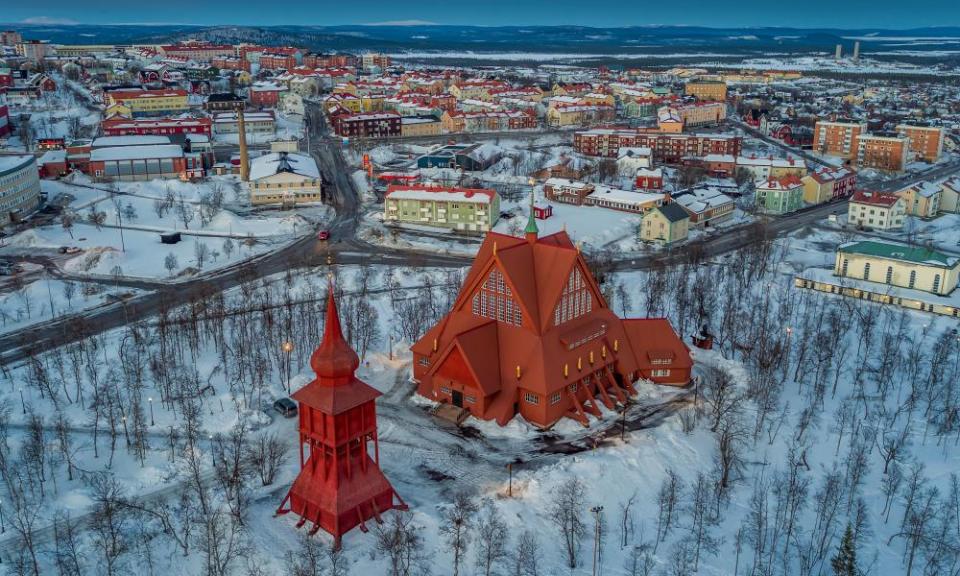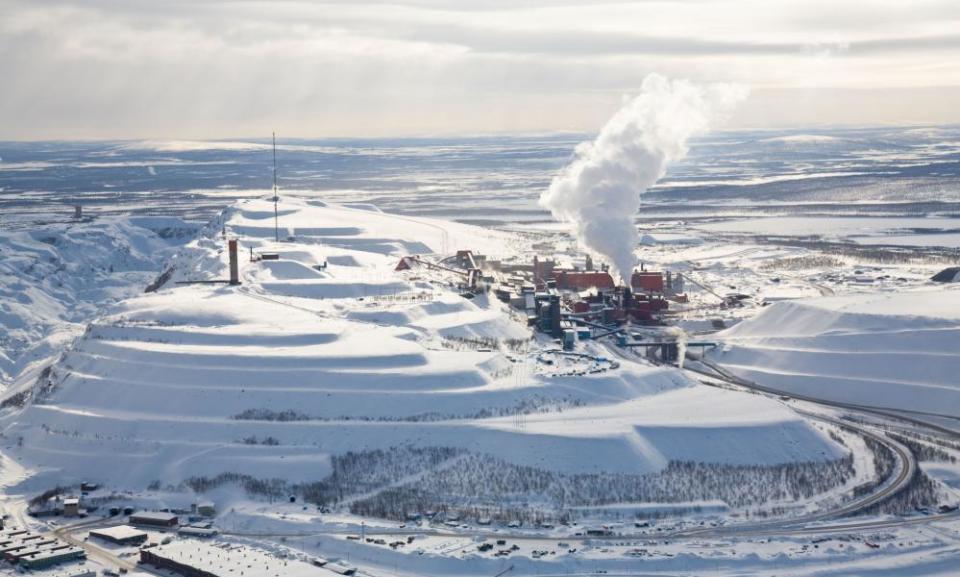Why a Swedish town is on the move – one building at a time

In the far north of Sweden, 125 miles above the Arctic Circle, sits the church of Kiruna, once voted the most beautiful old building in the country. The cosy terracotta-coloured church, with its fairytale rooftop points, is designed to resemble a hut of the indigenous Sami people. It opened in 1912, with almost no religious symbols, and is described by the vicar, Lena Tjärnberg, as “the living room of the community”. But if Kiruna church is to stay the same, it must go.
In 2026, the entire 600-tonne wooden building will be loaded on to trailers and moved to a new spot near the local graveyard. It’s just one large – and technically tricky – piece of a project to move Kiruna to a new home, three kilometres (1.9 miles) east of the old town. Billed as the world’s most radical relocation project, Kiruna is moving because subsidence from the local iron ore mine is threatening to swallow the town. Cracks have already appeared in the hospital; a school is no longer safe for its pupils.
“We are more than happy that the church can move,” Tjärnberg said. “Of course, I know people can be sad. Kiruna church is a landmark here, you can see it everywhere. You can feel sad about the skyline.”
The town has a population of 18,000, and its fate has been intertwined with that of the mine since it was founded in 1900 . The mine, run by Swedish state-owned company LKAB, is the largest iron ore mine in the world, producing 80% of the EU’s supply.
Now LKAB hopes to be at the forefront of Europe’s green industrial revolution and drive for autonomy in natural resources, in response to the climate crisis and alarm about Europe’s dependency – often on autocratic foreign governments – on vital metals and minerals. It began producing fossil-free sponge iron in 2021, by replacing coal with hydrogen produced from green electricity. It announced last month that it was sitting on the largest known deposit of rare earth elements in Europe, metals that are vital to produce electric car batteries and wind turbines.
“Sweden is literally a goldmine,” the deputy prime minister, Ebba Busch, who is in charge of climate and business, told reporters inside the mine, 500 metres below ground. “Europe needs to learn the lesson, to not be so highly dependent on one single country for gas in the way we were [on] Russia.”

The discovery of rare earth metals offered the chance, she said, to also become less dependent on China, the source of 86% of the global supply of rare earth elements.
But Kiruna’s transformation is alarming some of the Sami people, who inspired its most beloved building and gave the town its name – Kiruna comes from the Sami word giron, which means snow grouse.
Centuries before LKAB began tearing up the earth, Sami people were herding reindeer throughout the Arctic lands. Now they fear that way of life – already threatened by the climate crisis, which is making it harder for reindeer to find their main winter food source, lichen – is coming under more pressure.
The fragmentation of the land makes reindeer herding ever more difficult, Stefan Mikaelsson, the deputy chair of the board of the Sami parliament, told the Observer: “We have the railroad and we also have the mining business and now the movement of the city centre. It is more and more difficult to continue with the movement of reindeers.” He fears that any stop to such an “an ancient activity” could compromise Sami rights to the land.
Nearly 10,000 Sami people in Sweden are on the electoral register for the Sami parliament, but the true population is unknown as the Swedish census does not collect ethnicity data.
Mikaelsson, also a reindeer herder, dismissed suggestions that it would be better to produce fossil-free iron ore in Sweden, rather than depend on polluting metals from elsewhere. “Not if it destroys remaining biological diversity,” he said, referring to the Sami people. “We want to retain our old culture and our old values to have a good life, not to have an easy life with high expenditures and unhealthy consumption habits.”
An LKAB spokesperson, Anders Lindberg, said two Sami villages have had to change their reindeer herding routes since the mine opened in 1900, but insisted the company was now “much better” at listening to herders and trying to minimise its impact on their work. Nevertheless, the Sami village of Gabna may have to change its herding routes as a result of the recent rare earth discovery.
“It is possible that there will be an impact on reindeer herding and that they will have to reroute again,” Lindberg said..
Meanwhile, Nina Eliasson, the head of planning at Kiruna municipality, said “not so many people are negative” about moving the town, but acknowledged many were sad when their home was demolished. “Then you feel that this is for real. And of course [it is about] your memories, the place that you grew up in.”
About 6,000 people are due to move. Tenants will see their rents gradually rise over eight years to a cap of 25% higher than the old rate. Eliasson said the mining company had no choice but to raise rents to upgrade the 1960s housing stock.
The work may not be complete until 2035 and the town has not received any security that future mining may not lead to further changes. “We didn’t get any guarantees at all,” Eliasson said. “We had to accept it.”

